I have the habit of reading something new online every day. Today, my choice was Just Tracking Your Metrics Isn’t Enough By Michael Kwan.
I agree with the author that tracking is the most important thing for an online business. You have to track everything to see what is working and what is not working. The problem is that you must learn how to set up your tracking correctly.
Peter Drucker, the famous management guru, said:
“Measuring your stats is good. But you’ve also got to manage them. Keeping tabs on all those numbers isn’t good enough. You need to learn from what those numbers are trying to tell you. Knowing them, you can make better decisions now and into the future.”
As an affiliate marketer, you must monitor your affiliate links to improve your digital marketing. Simply said, you must know how to track affiliate links.
You must use a good tracking program that shows you the right analytics. An excellent way to track affiliate links is using a reliable tracking solution.
CPV One is one of the best tracking solutions online. In this blog post, we’ll look at affiliate link tracking and how CPV One can help you track affiliate links effectively.
Understanding Affiliate Link Tracking
Affiliate link tracking is the process of monitoring the performance of your affiliate links. When you join an affiliate program, you get special links to share and bring people to the advertiser’s website.
Affiliate tracking is the process of monitoring user clicks on your links. It also involves tracking their actions on the advertiser’s site. Additionally, it includes giving credit to the affiliate for any sales or conversions. Tracking affiliate links allows you to gauge the effectiveness of your marketing efforts and measure your affiliate sales.
Significance of Tracking Affiliate Links
Knowing how to track affiliate links plays a crucial role in affiliate marketing. Affiliate marketing is a digital marketing strategy where affiliates earn a commission to drive sales or advertisers’ leads.
By knowing how to track affiliate links, you gain valuable insights into the performance of your marketing campaigns. Tracking helps you see which links make the most money, understand how users act, and find the best marketing channels. With accurate tracking information, you can make data-driven decisions, optimize your marketing efforts, and maximize your affiliate sales.
Efficient link tracking helps identify the best way to convert users. Knowing how to track affiliate links allows you to study user clicks, page actions, and data to improve conversion rates.
Knowing how to track affiliate links.also allows you to evaluate different marketing channels and their impact on affiliate sales. You can focus your marketing efforts on the most effective channels by tracking how well your affiliate links perform. This will lead to increased earnings and a successful affiliate marketing campaign.
The Mechanics of Affiliate Link Tracking
Affiliate link tracking is used to follow user interactions with your affiliate links. It works like this: when a user clicks on one of these links, they are sent to the advertiser’s website. A tracking code or pixel is added to the link during this process. This code collects cookie information about the user’s browser, where they came from (referral link), and other essential details.
Most commonly, cookies track user actions. They are small text files containing tracking information stored in the user’s browser.
Using cookies, affiliate tracking solutions can attribute sales or conversions to the affiliate. However, cookie tracking has limitations, such as users clearing their browser cookies or using private browsing modes. To overcome these challenges, tracking solutions like CPV One offer cookieless tracking options. Cookies are appreciated this year.
Affiliate link tracking involves monitoring outbound links. It also consists of tracking user clicks and actions. Additionally, using cookies or other methods attributes sales to affiliate marketers. This tracking process enables affiliate marketers to gain valuable insights into user behavior, optimize their marketing strategies, and drive more successful affiliate campaigns.
Diving Deep into CPV One
Now that we understand affiliate link tracking better, let’s dive deep into CPV One. Introduce a comprehensive tracking solution to empower affiliate marketers with advanced tracking capabilities.
An Overview of CPV One
CPV One is a leading tracking solution that offers affiliate marketers a powerful tracking platform. Its user-friendly dashboard provides a centralized interface for monitoring and analyzing the performance of affiliate links. The dashboard showcases essential tracking metrics, such as clicks, conversions, and revenue. This allows you to gain valuable insights into the effectiveness of your affiliate marketing efforts.
The interface of CPV One makes it easy for users to navigate and access the necessary tracking features.
Ultimate Benefits with One Platform for All Marketing
- All-in-One Tracking: Manage and test all your marketing campaigns. Include Google Analytics, Facebook ads, and Amazon affiliate links in one place. Use one platform for all your marketing campaigns.
- Mobile-Friendly Reports: Get over 20 metrics to optimize your campaigns for mobile users.
- Detailed Analytics: Access in-depth campaign data, including transaction ID, pixel tracking, different links, ads, keywords, and offers. Use over 30 metrics to optimize profits and ROI.
- High Traffic Optimization: Enjoy ultrafast redirects and customizable features for heavy internet traffic.
- Pre-filled templates: Use 150 ready-made templates for various traffic sources and affiliate networks, making data synchronization easy.
- User-Friendly: Set up your first campaign quickly without needing programming knowledge.
- Cookie and Cookie-less Tracking: Easily switch between tracking with and without cookies.
- Custom Domains with SSL: Use custom domains with free SSL to keep your campaigns secure and trusted by browsers like Chrome and Firefox.
- API Integrations: Integrate with platforms like Facebook, TikTok, and Google Ads for seamless conversion tracking.
- Multivariate Testing (MV Lab): Test multiple versions of your landing page with integrated multivariate testing.
- Multi-User Access: Allow team access to different campaigns.
- Internal Link Control: Direct visitors to specific landing pages or offers based on your strategy.
- Cloaking Options: Disguise affiliate link URLs for a more professional appearance.
- Referrer Capture: Track and categorize referrers to identify new target verticals.
- Various Tracking Modes: Choose from different redirect modes, like 302 or Meta Refresh, to meet specific traffic source requirements.
- Offline Conversion Tracking: Track phone orders and other offline transactions seamlessly.
- Postback URL Tracking: Use CPV One’s special Postback URL for accurate affiliate tracking.
- Campaign Import: Easily import campaigns from other trackers like Voluum or Bemob.
- Bot and Proxy Detection: Filter traffic and manage bots and proxy visitors effectively.
How To Track Affiliate Links with CPV One
Now, let’s explore how to track affiliate links with this powerful tracking solution.
Step-by-Step Guide to Setting Up an Offer from CPA Network
You can find instructions on setting up a regular campaign in the CPV documentation and CPV blog posts.
In this article, we will set up the CPA campaign. You can learn more about CPA campaigns in the Powerhouse affiliate member area.
First, you should sign up for a few affiliate networks if you plan to start with CPA affiliate offers and CPA lead generation.
Start with just one or two networks to start making some money. If you join too many networks simultaneously, you might not earn enough from each to get paid.
We will take Zeydoo as an example for this article. Also, you need traffic sources to bring traffic to the offer. We will use Propeller Ads as an example.
You must be approved to promote offers in the affiliate networks. Here is a comprehensive CPA network approval guide.
Setting up affiliate link tracking with CPV One is a straightforward process. Follow these steps to get started:
Step 1: Sign up for CPV One: Visit the CPV One website and create an account. Follow the registration process to create your CPV One dashboard and start your 14-day free trial.
Step 2:
Add the landing pages and offers:
Go to LP’s & Offers
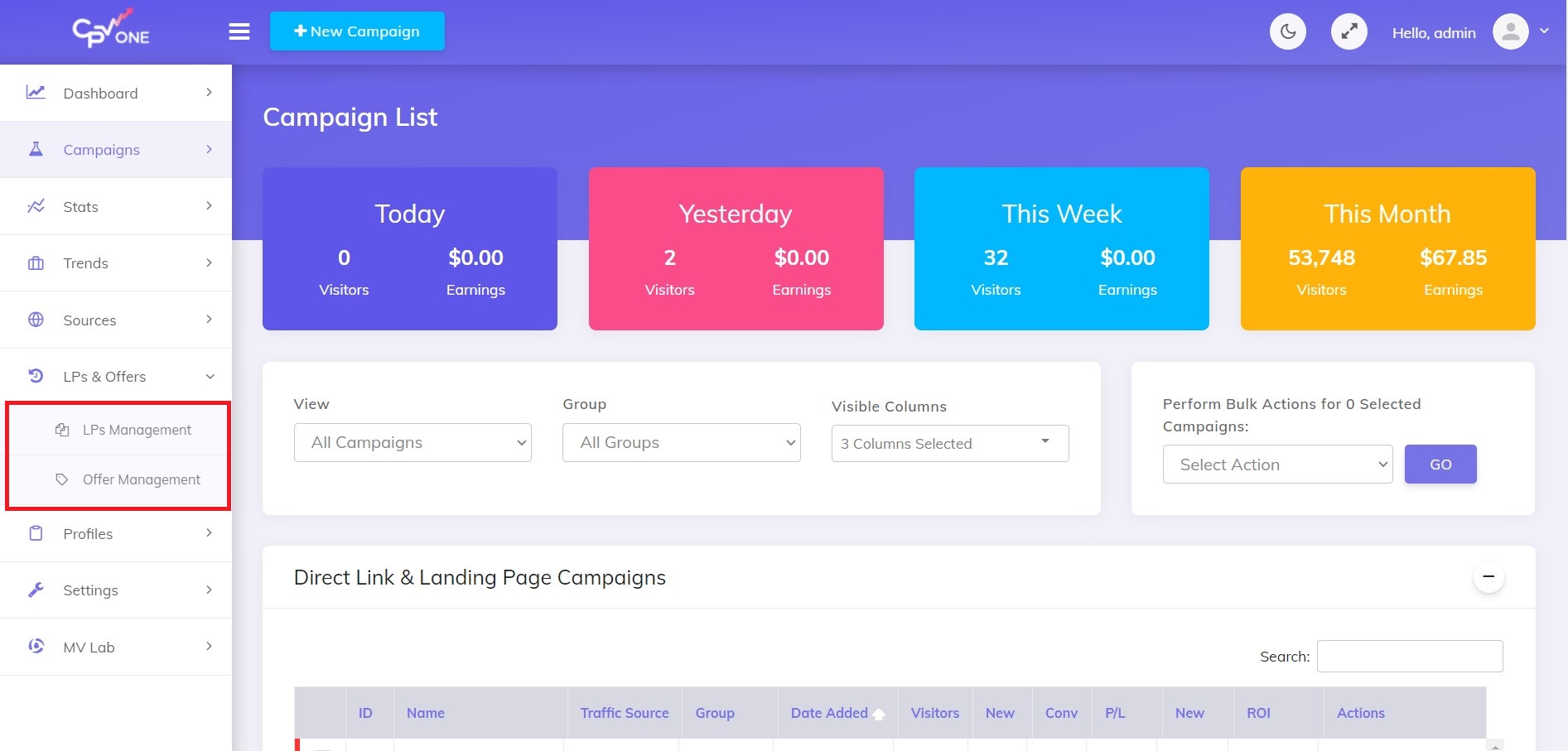
Add your landing page to LP’s management. You must create several landing pages and test them to see which will convert most.
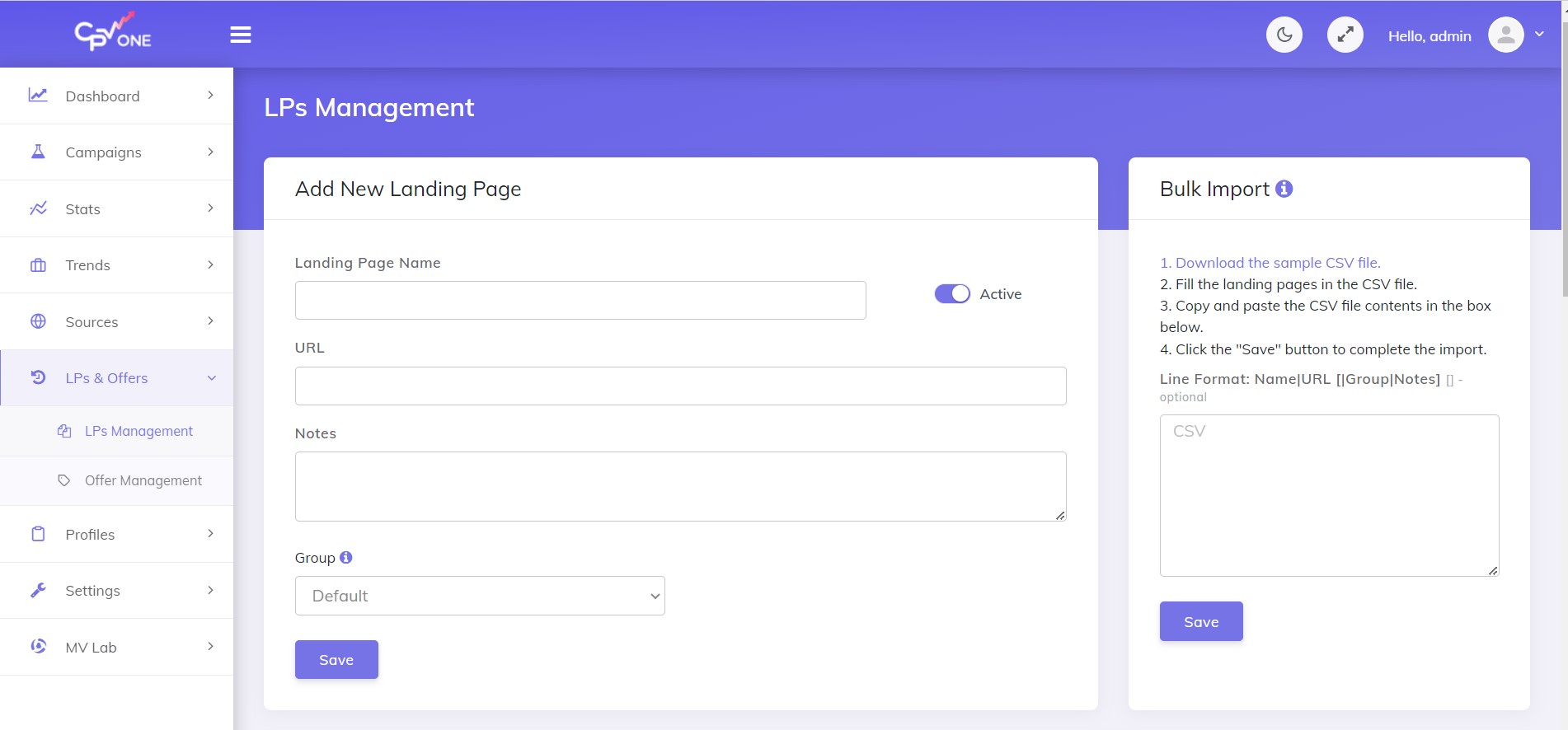
Add your offer to the offer page management.
In the CPA network, you must find the offer you want to promote. Before you start, ask your affiliate manager, who offers converts in low-paying countries. The cost of testing them is more minor, and it is easier to scale them later.
Here is the offer we will take as an example in this article

To set the tracking correctly, please use the following instructions:
1. Choose one of the offers from the Zeydoo platform, put the traffic source you want to use, and get the offer URL containing parameters {ymid} and {var}.
The offer URL can look like this:

https://hrkaanhst.com/link?z=6870001&var={SOURCE_ID}&ymid={CLICK_ID}
You can see why I added another traffic source at the end of the article. As you can see, you can promote offers on various platforms.
2. Use the offer URL you got from Zeydoo in your tracker or advertising network while creating a new offer. The ymid and var parameters should be equated to the corresponding macros on the tracker’s side (or ad network).
{ymid} – parameter responsible for conversion transfer
{var} – traffic source ID. Please note that the var parameter must be no longer than 40 characters long with the following list of acceptable symbols:
- a-z
- A-Z
- 0-9
- +!:/ ,?()$=.%[]_-
Go to CPV One and add a new Offer.
Add Name, the affiliate network, or in-house if you promote your offers.
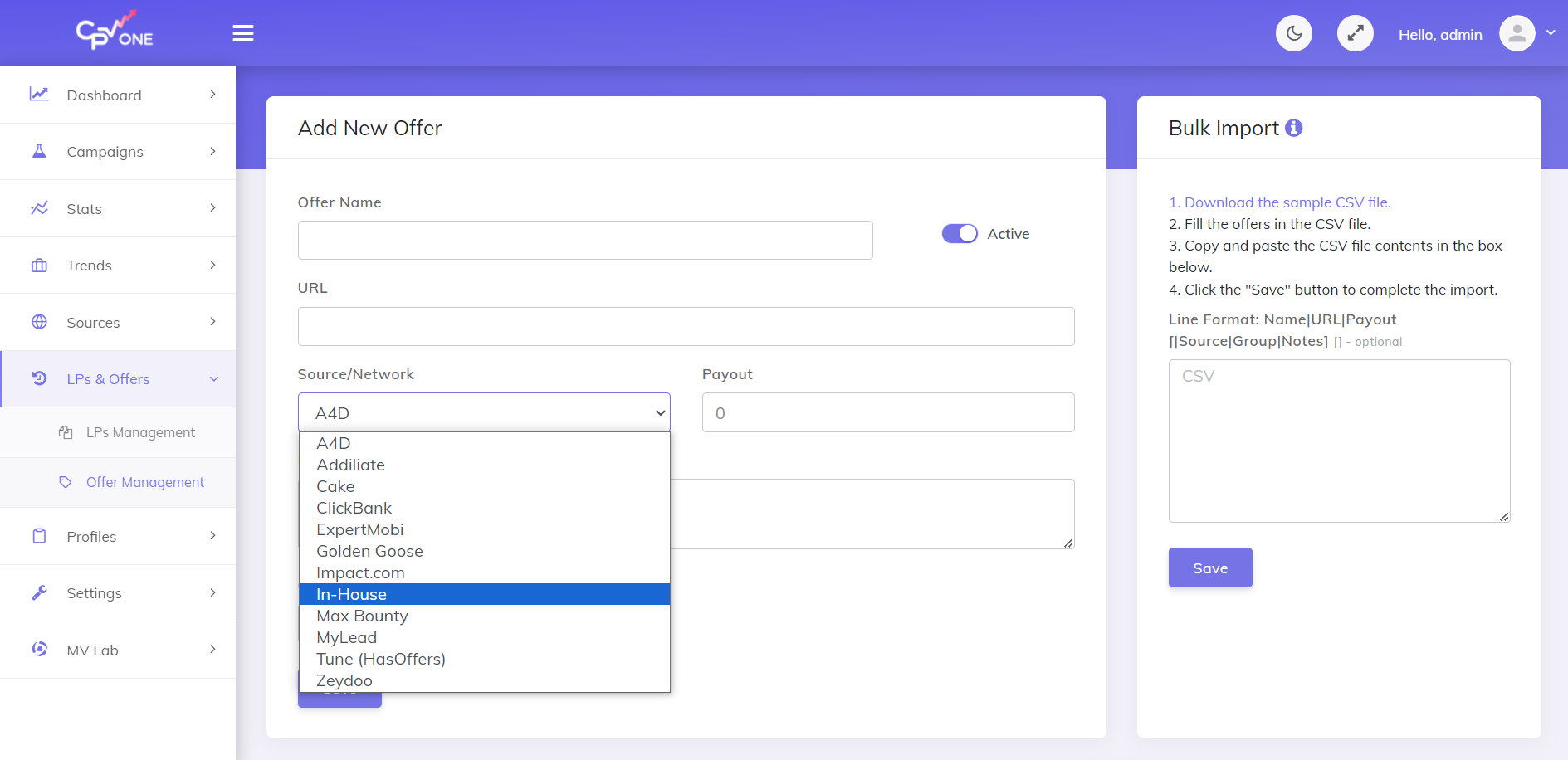
Then, put the offer from Link from Zeydoo and replace the var token with the existing ones in the CPV one.
Click on the token. It will blur and show up in the link. Then, delete the part that you replaced with a token.( In our case, [SOURCE_ID]
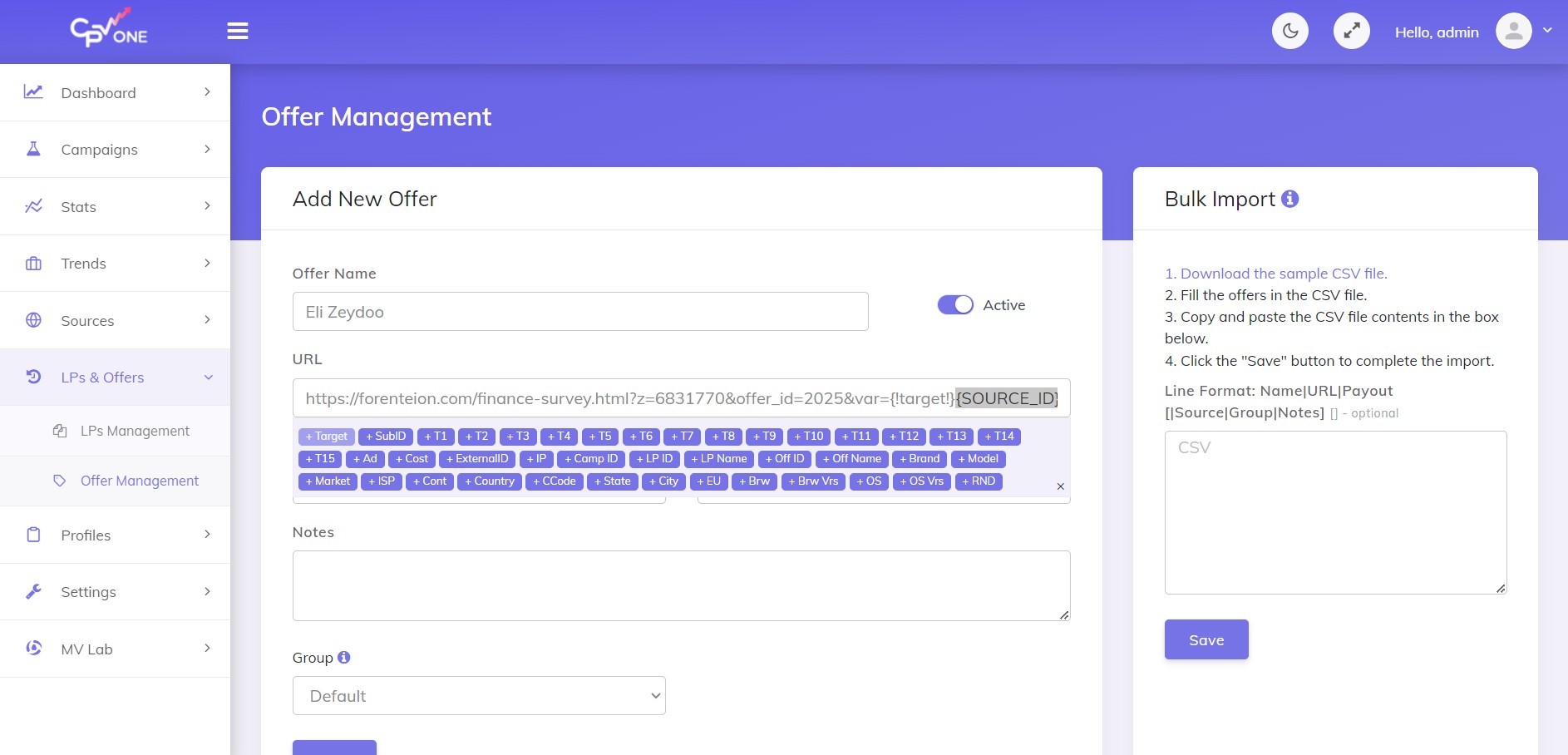
Do the same with ymid

The offer URL generated in the tracker, in this case, will be
https://hrkaanhst.com/link?z=6870001&var={!target!}&ymid={!subid!}
Postback will be generated automatically, which is best when using this tracker. It has over 200 integrations with affiliate networks and tracking sources.
Ad at least two pages LPs management to find the control
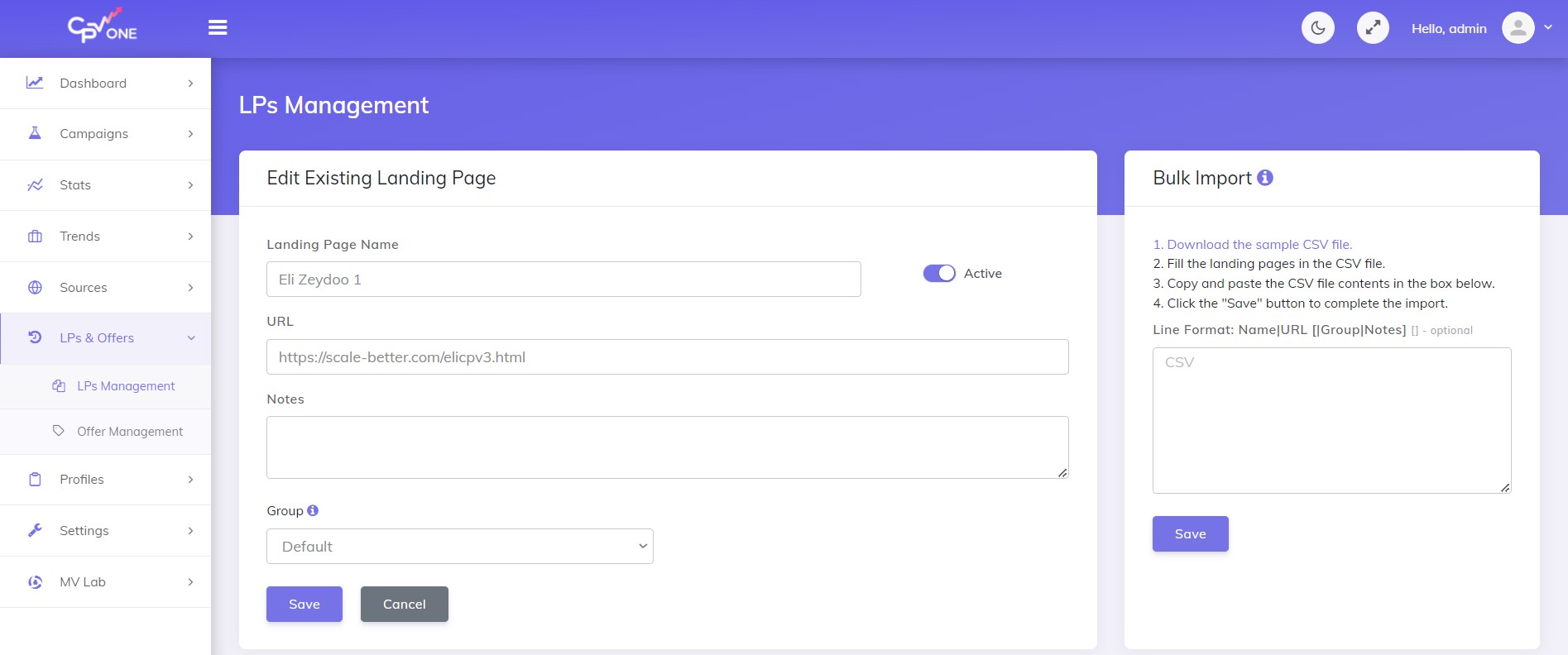

Step 3:
Integrate the Affiliate network and Traffic source
Integration with Zeydoo and CPV One.
Go to integrations offer sources and click on the new offer source
Then just click import from the catalog and choose the network you want to use, in our case, Zeydoo
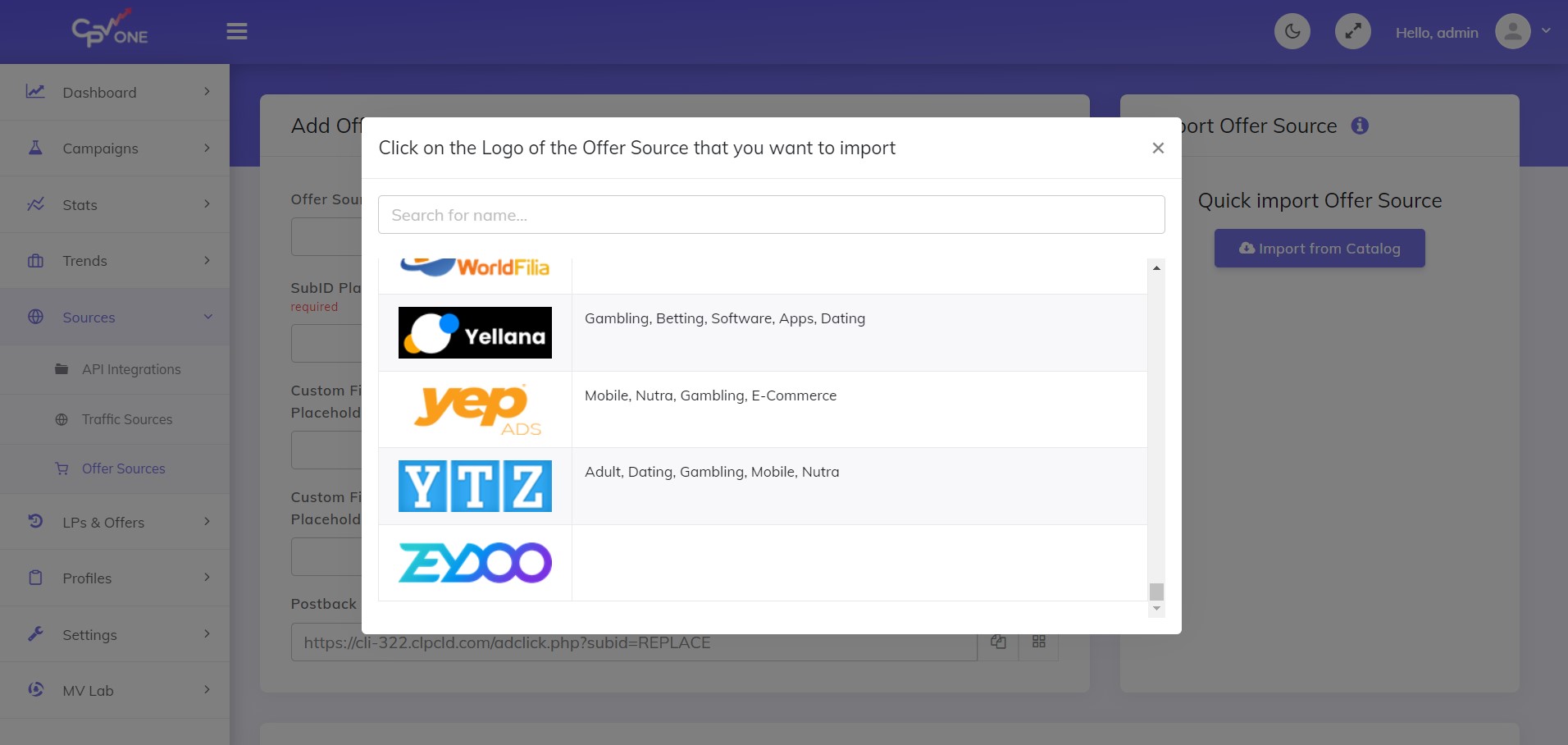
Everything is connected with just one click
You will get the post-back URL automatically. You don’t need to investigate which tracking tokens this platform uses.
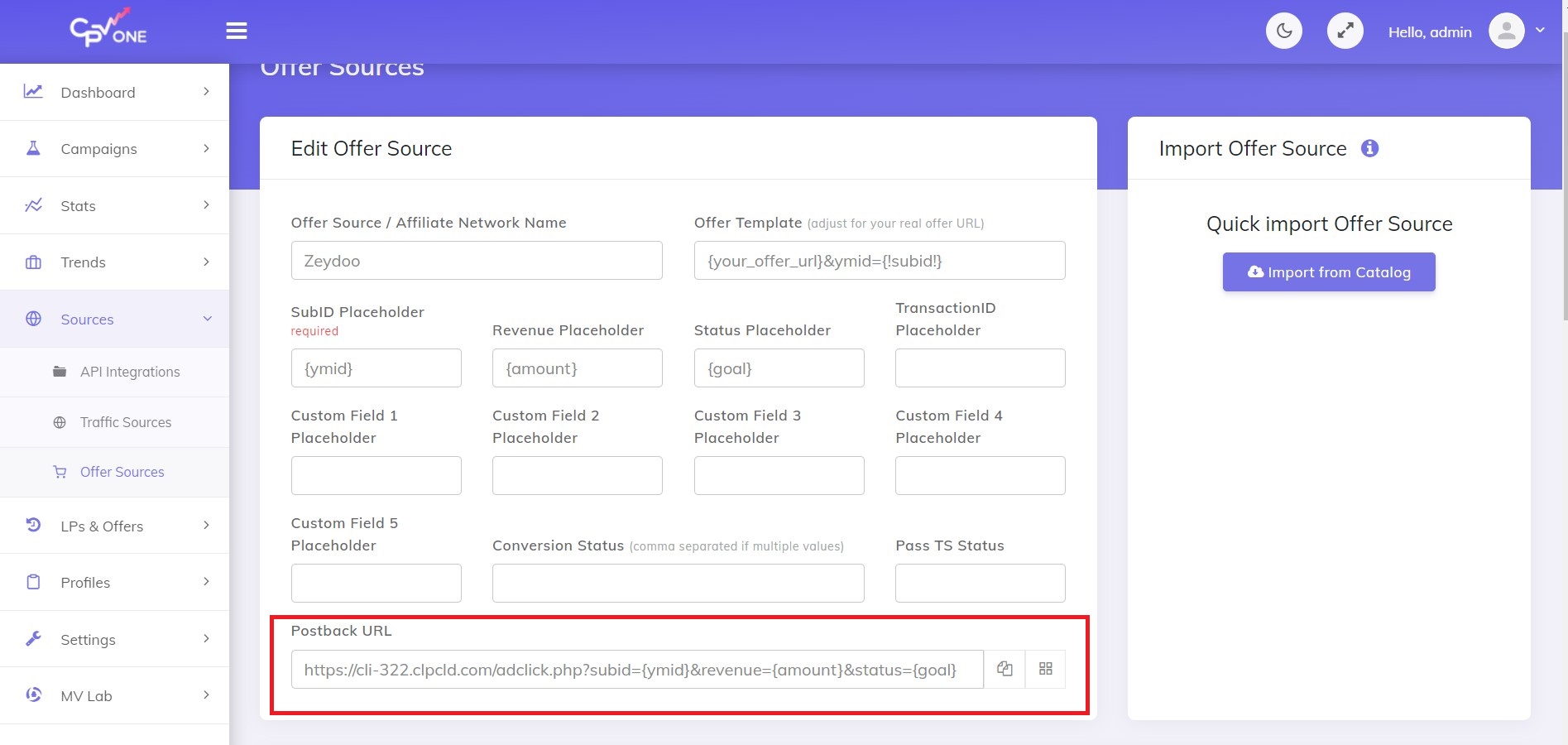
Put the postback URL to Zeydoo

And CPV One and Zeydoo are connected.
You connect the platforms only once. After that, you just choose the postback URLs in the offers
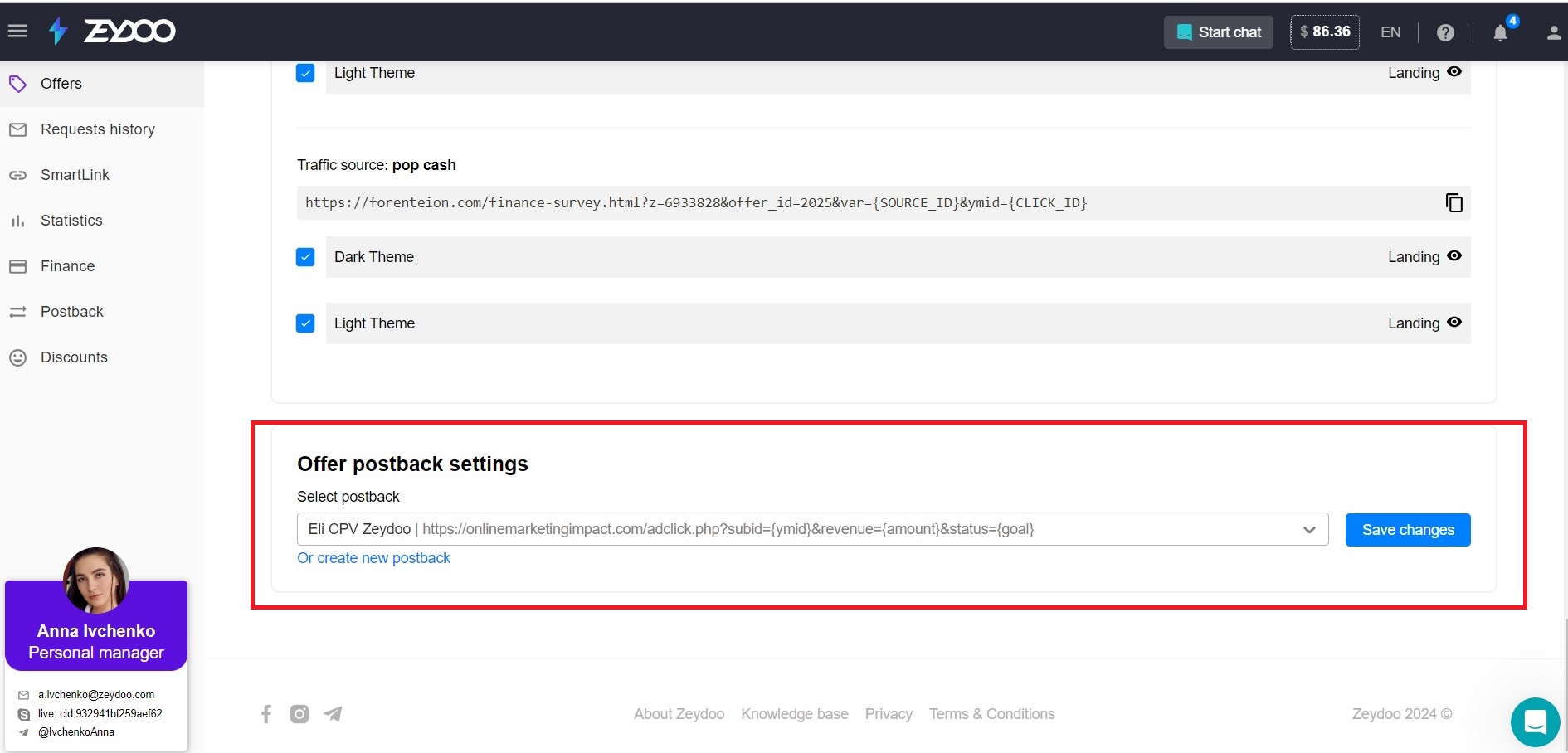
Now let us connect Propeller ads
Go to Traffic sources, click import from the catalog, and Choose propeller ads

You will immediately get the postback URL and all the tokens and macros that the traffic source uses.
You need only to go to propeller ads and choose a tracker
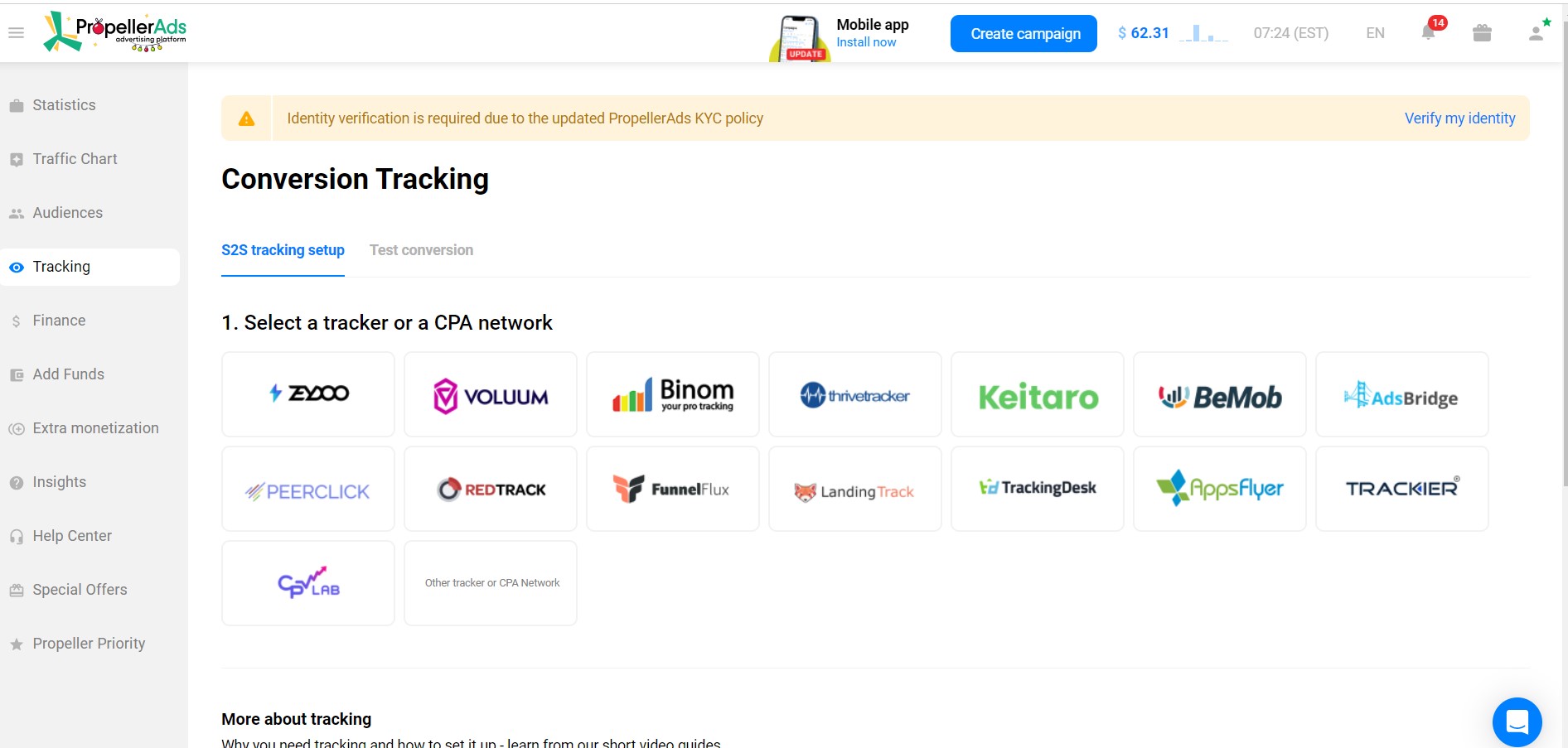
Click on CPV, copy the S2S postback URL, put it in the CPV lab postback URL placement, and click save. Everything is connected now
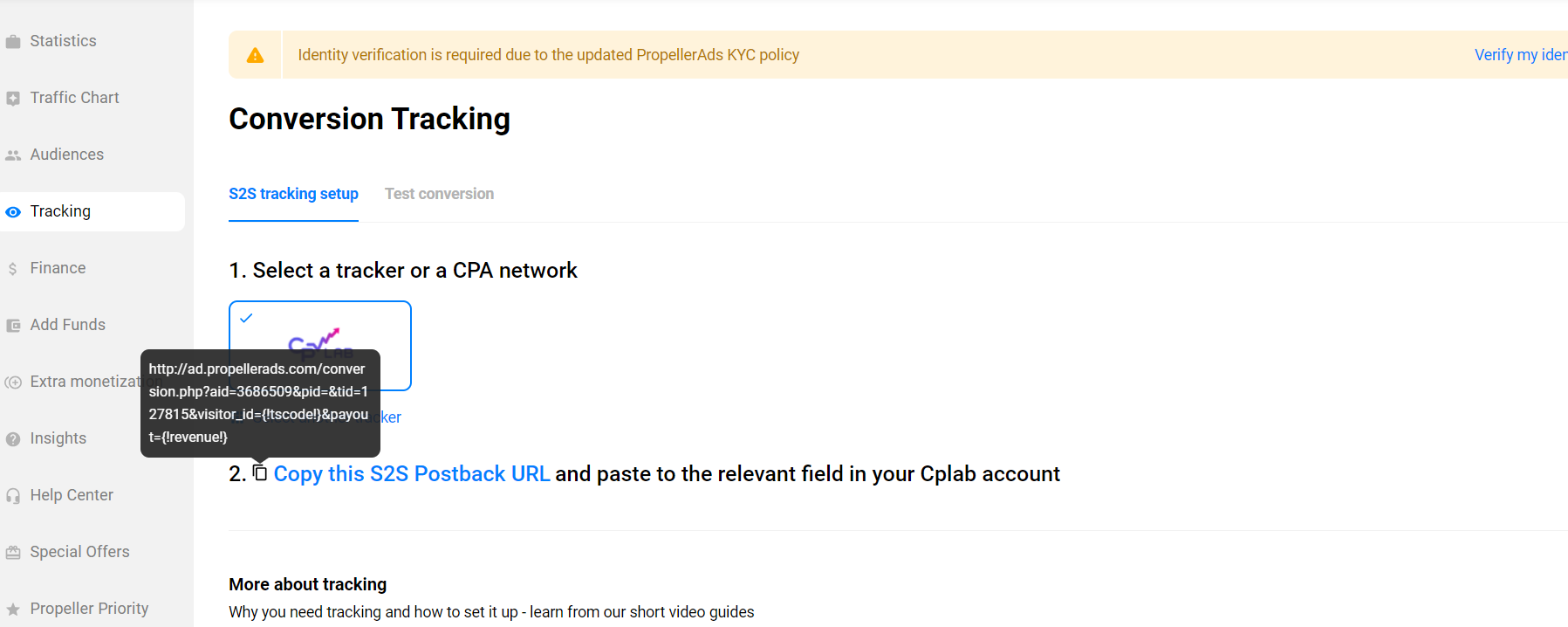
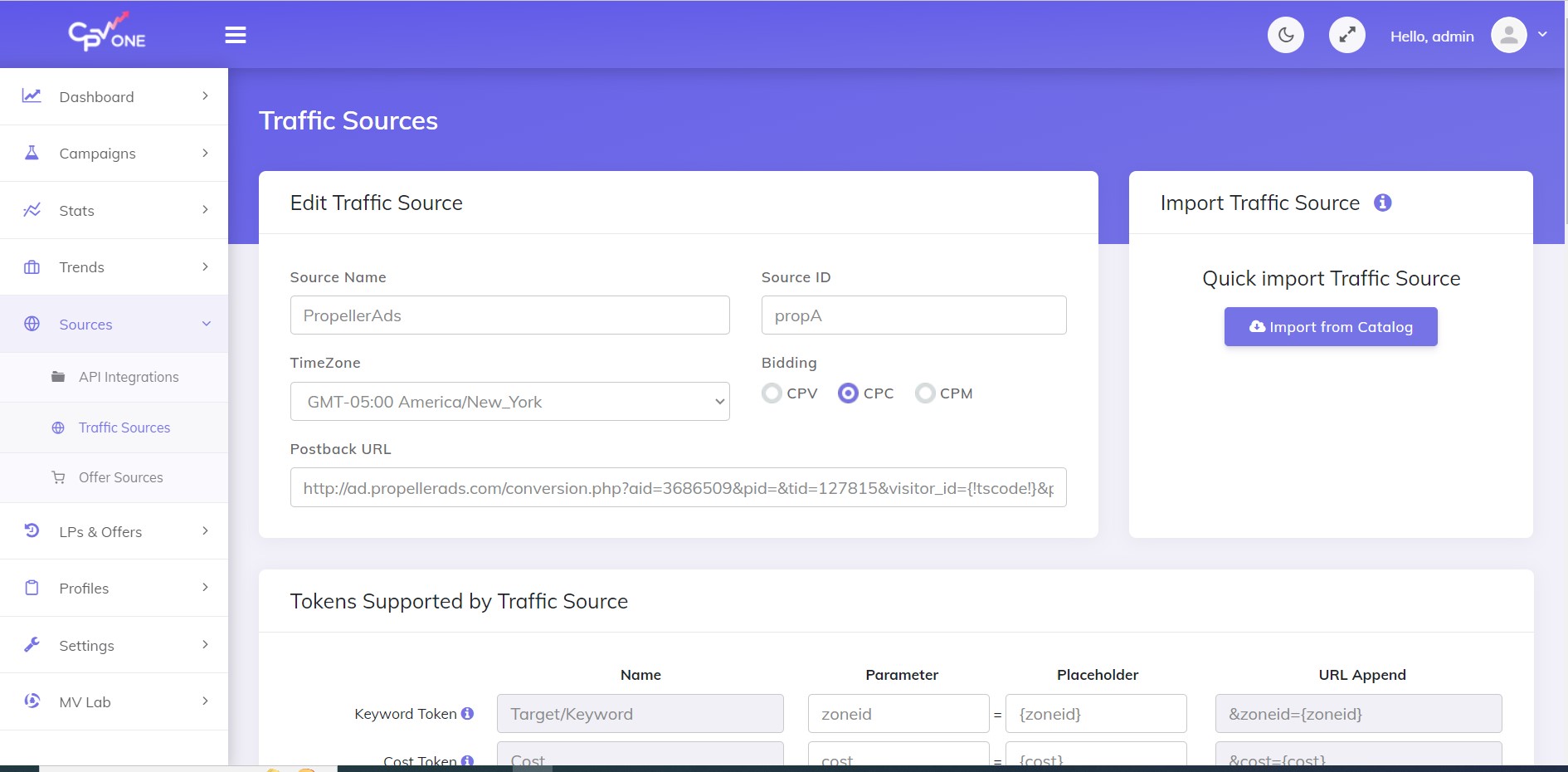
Step 4:
Set the campaign
Now, setting up a campaign is the easiest part. You only choose the option and get tracking links.
Let’s start
Go To Campaigns/New Campaign/Direct link campaign
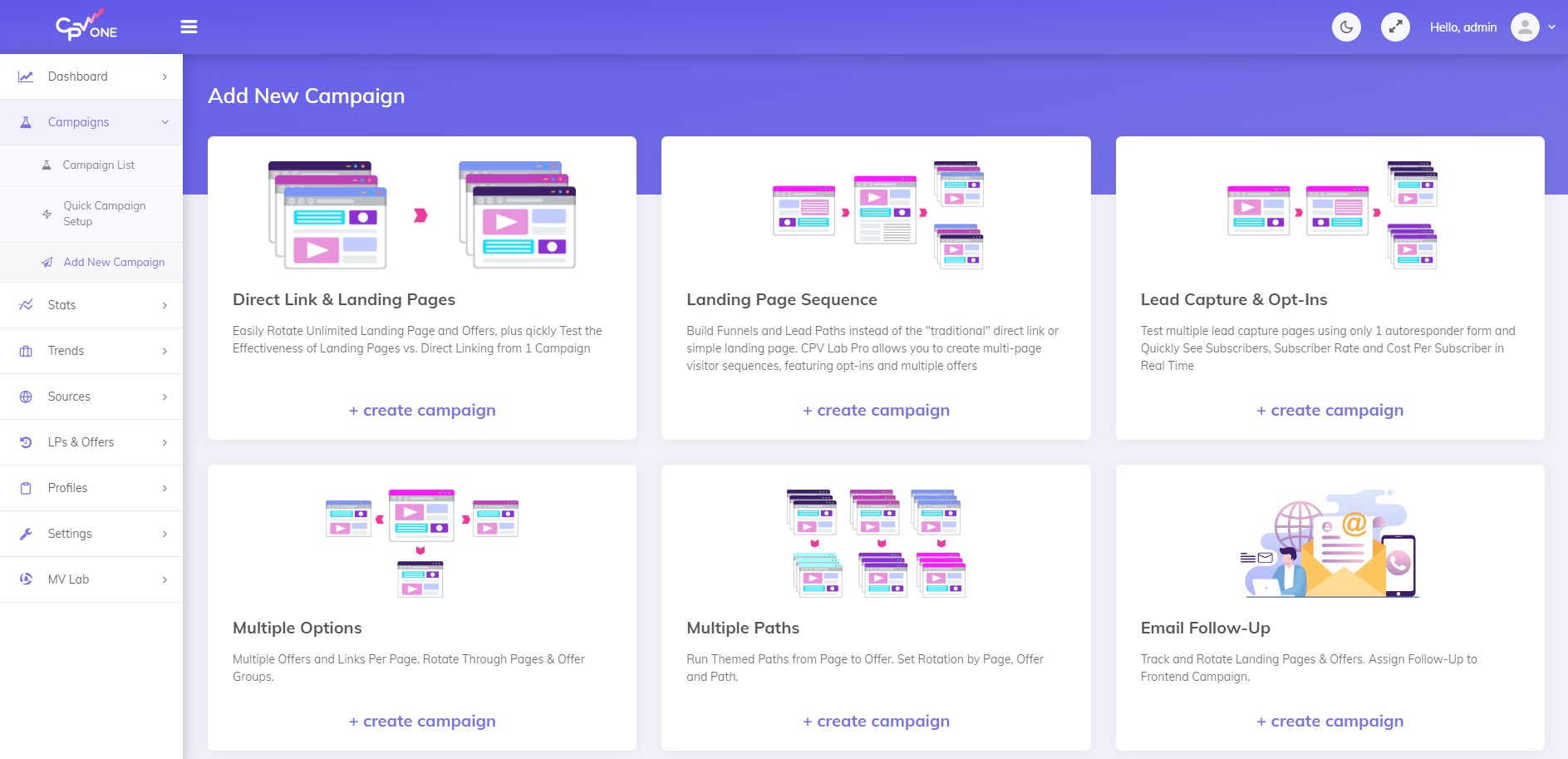
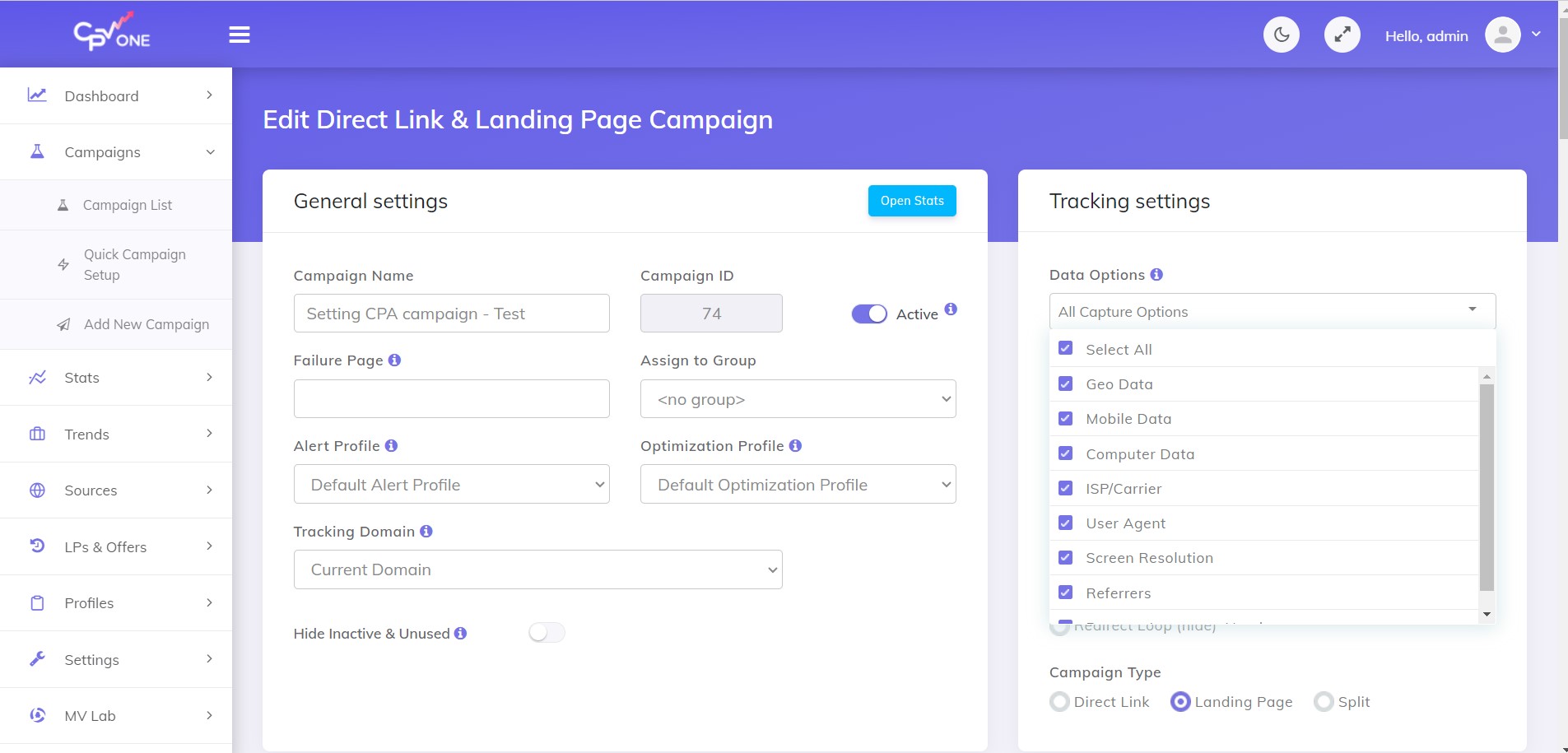
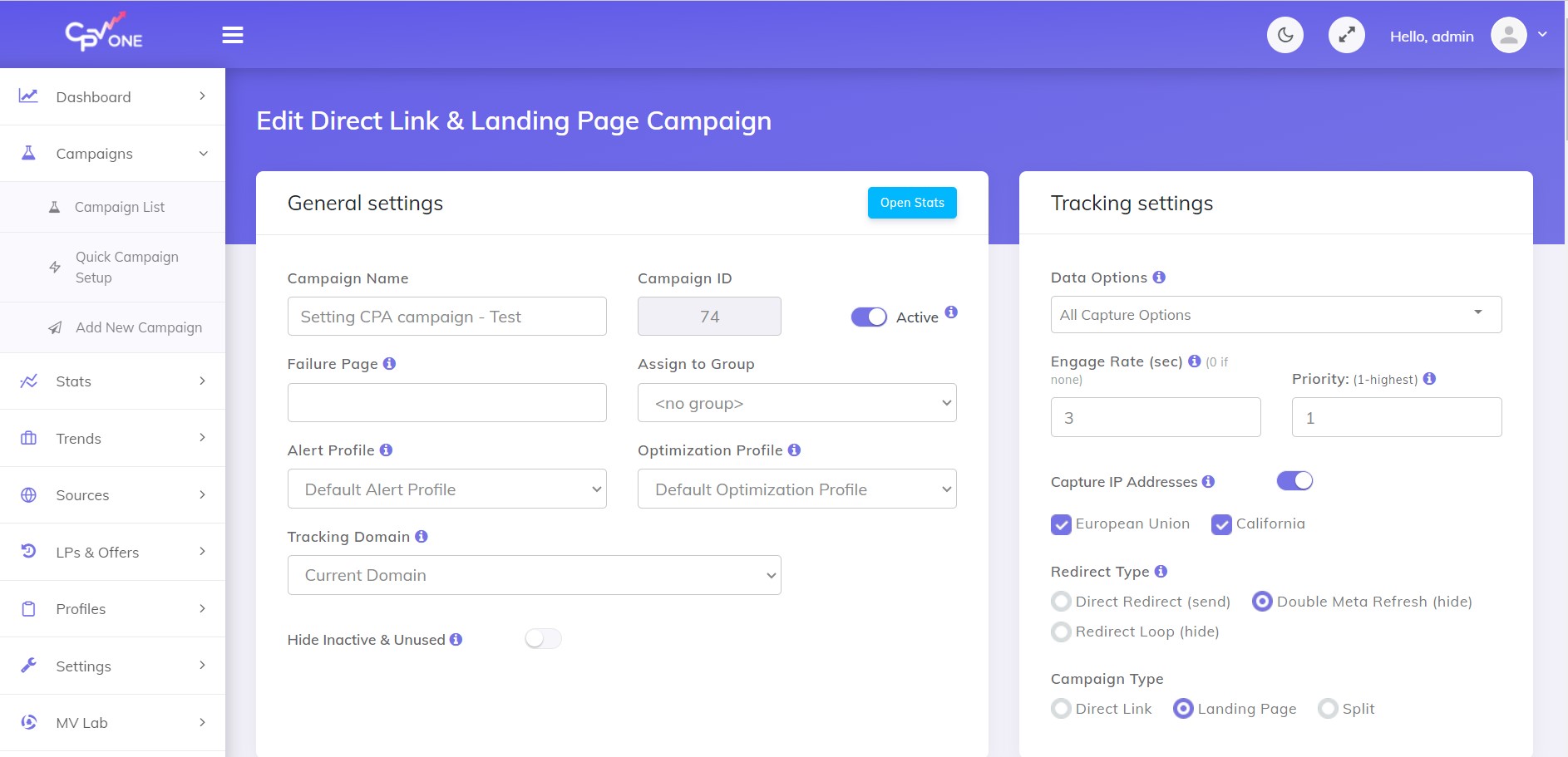
Select all activities and 3-second interactions.
The terms Direct Redirect (send), Double Meta Refresh (hide), and Redirect Loop (hide) refer to different types of redirection methods used in web development and online marketing. They are particularly relevant in affiliate marketing and ad tracking. Here’s an explanation of each:
Direct Redirect (send):
This is a straightforward redirection method. When users click on a link, they are immediately and directly sent to the target URL without any intermediate steps or pages.
This type of redirect is transparent and fast. However, it can expose certain tracking parameters or affiliate IDs in the URL. This might not be desirable in some scenarios.
Double Meta Refresh (hide):
This method is a bit more complex. It involves redirecting the user through two intermediate pages. These are called “double” because there are two of them. They have to go through these before they reach the final destination.
Each of these intermediate pages performs a meta refresh, effectively cleaning the referral data.
The purpose of this is to hide the source of the traffic from the final destination page. It’s often used to prevent the final website from seeing the original site (like an affiliate link) that the user came from.
Redirect Loop (hide):
This involves creating a series of redirects before the user reaches the final destination. The user clicks a link and is taken through multiple redirects in a loop-like manner.
This method is also used to hide the traffic source, similar to the double meta refresh. However, it’s more complex and can be less user-friendly because of the increased loading time.
Each of these methods has its own pros and cons. The choice of which to use can depend on factors like the desired level of referral data privacy, user experience considerations, and technical constraints. In affiliate marketing, these methods are important for tracking and attribution while ensuring privacy and data protection.
For CPA offers on track, the best is the double meta refresh.
We promote landing pages.
Add propeller ads as a traffic source and all tokens in Macros and Tokens
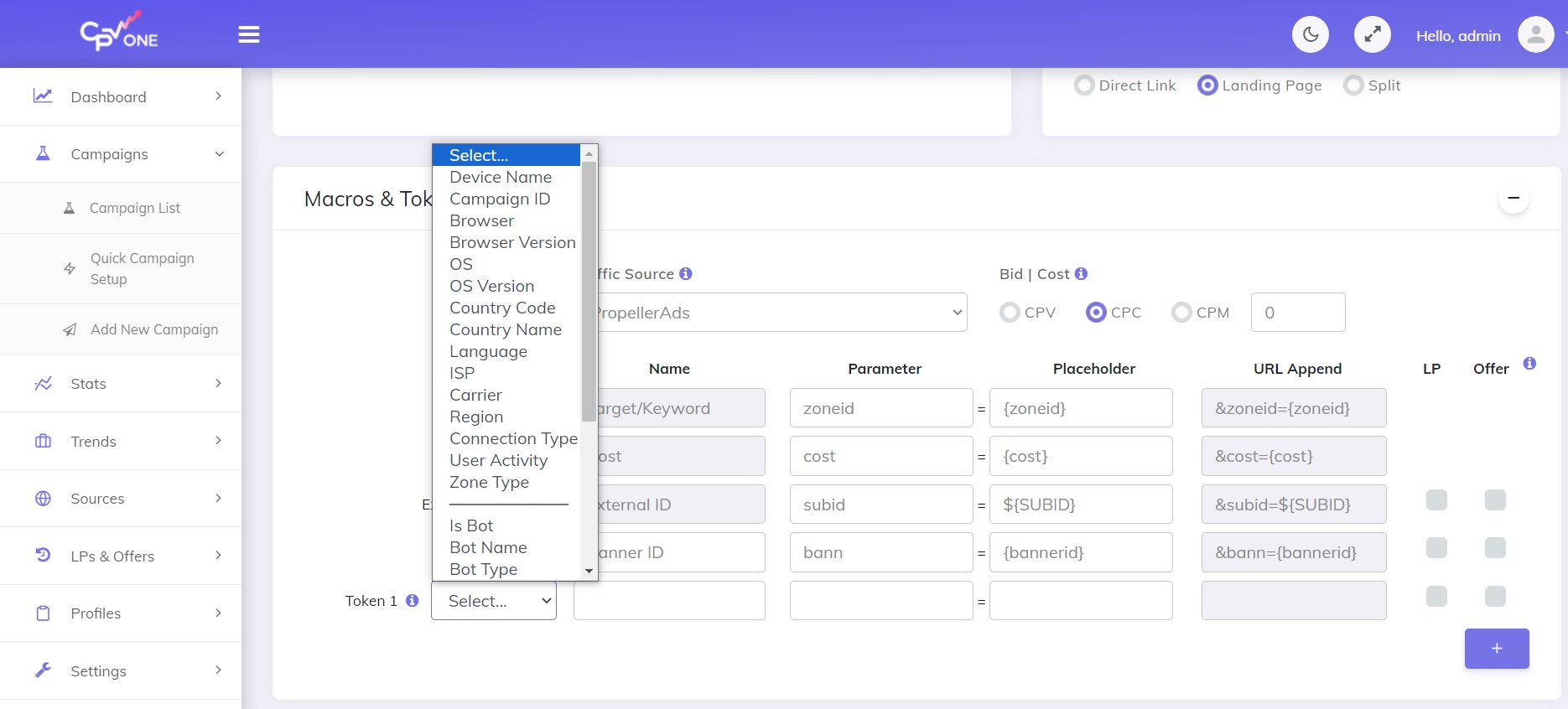
Add the landing pages. From the drop-down menu, choose the pages you saved in the LPs. In this case, Eli Zeydoo 1 and Eli Zeydoo 2. Click = each page to get 50% of the traffic.
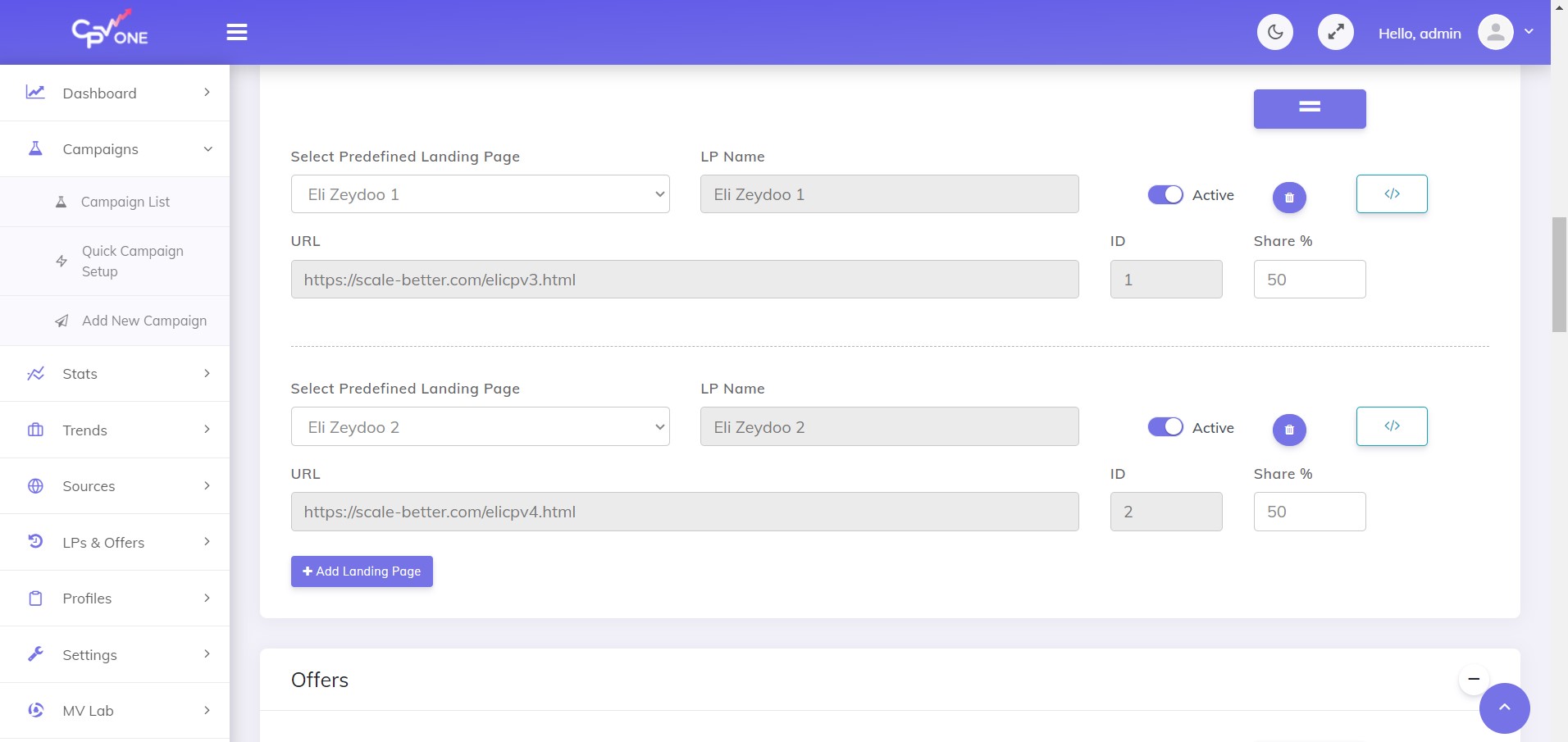
From the drop-down menu, choose the offer you put in the offer management. Click on the = sign to get 100% traffic
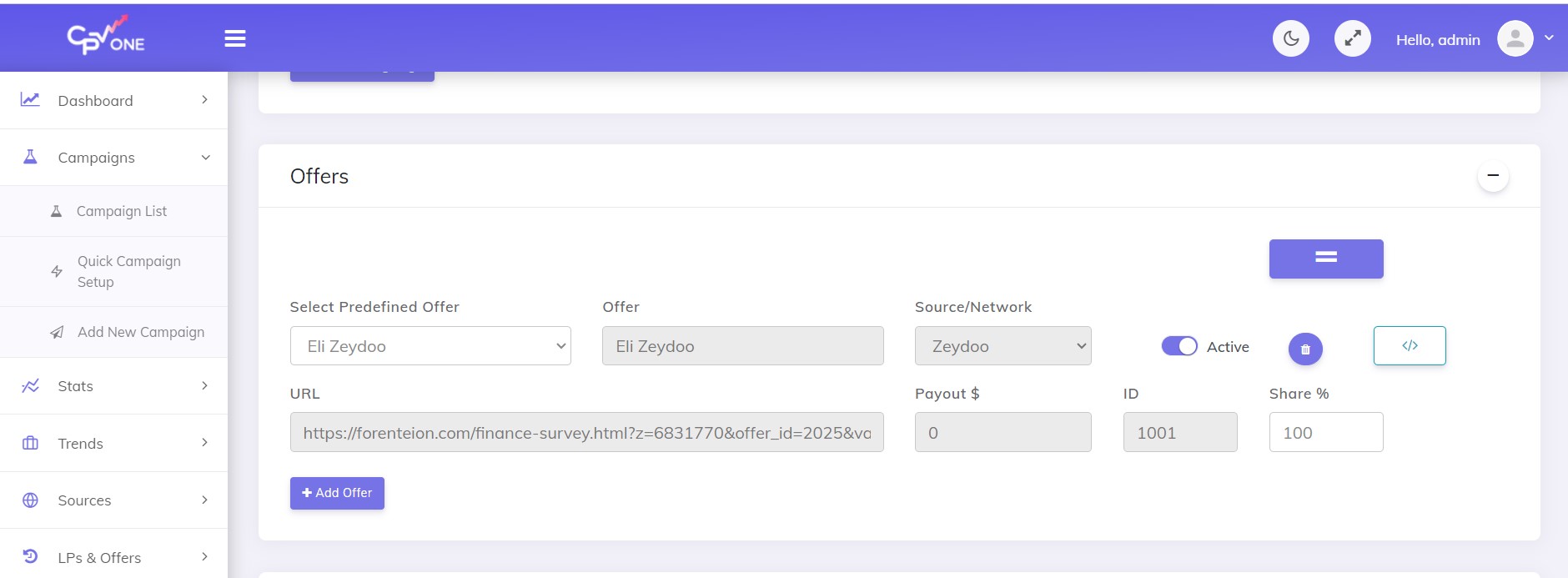
Click the traffic postback URL in the campaign links

and save the campaign
The first link is the link you need to put in the Propeller ads or other traffic sources to promote
The second link you need to put on the landing page is an click-offer link
The script in step 2 put in the landing page as HTML code
By following this step-by-step guide, you will be able to set up affiliate link tracking. You can connect with CPV One, Affiliate Network, and Traffic sources. This will empower you to track the effectiveness of your marketing campaigns accurately.
Common Mistakes to Avoid During Setup
While setting up affiliate link tracking, it’s important to be aware of common mistakes. They may hinder the accuracy of your tracking. Here are some common mistakes to avoid:
Duplicate parameter setup:
Ensure that you don’t set up duplicate tracking parameters. This can lead to conflicting tracking data and inaccurate affiliate link monitoring.
Incorrect setup of tracking pixels:
Double-check that you have correctly implemented tracking pixels on your website. Incorrect setup can result in inaccurate tracking of affiliate link clicks and conversions.
Overlooking setup of tracking links for affiliate campaigns:
Make sure to set up tracking links for all of your affiliate campaigns. as overlooking this step can lead to incomplete tracking data and ineffective affiliate marketing efforts.
Neglecting affiliate network parameter setup:
Ensure that you have properly configured affiliate network information in your tracking setup. Neglecting this setup step can result in inaccurate tracking and affiliate revenue attribution issues.
Not validating tracking setup:
After implementing your tracking setup, test and validate the tracking accuracy of your affiliate links. Neglecting this step can lead to tracking discrepancies and ineffective optimization of your affiliate marketing campaigns.
By avoiding these common mistakes, you can ensure that your affiliate link tracking setup is accurate and reliable. It provides you with valuable insights into the performance of your affiliate marketing efforts.
What can happen?
While writing this article, I got a message from Zeydoo.

This is the beauty of CPV One.
You don’t need to stop promoting the offer. Change only the traffic source on the platform. I put Pop Cash as an example.
As you can see, you connect the platforms with one click. and got the postback URL.
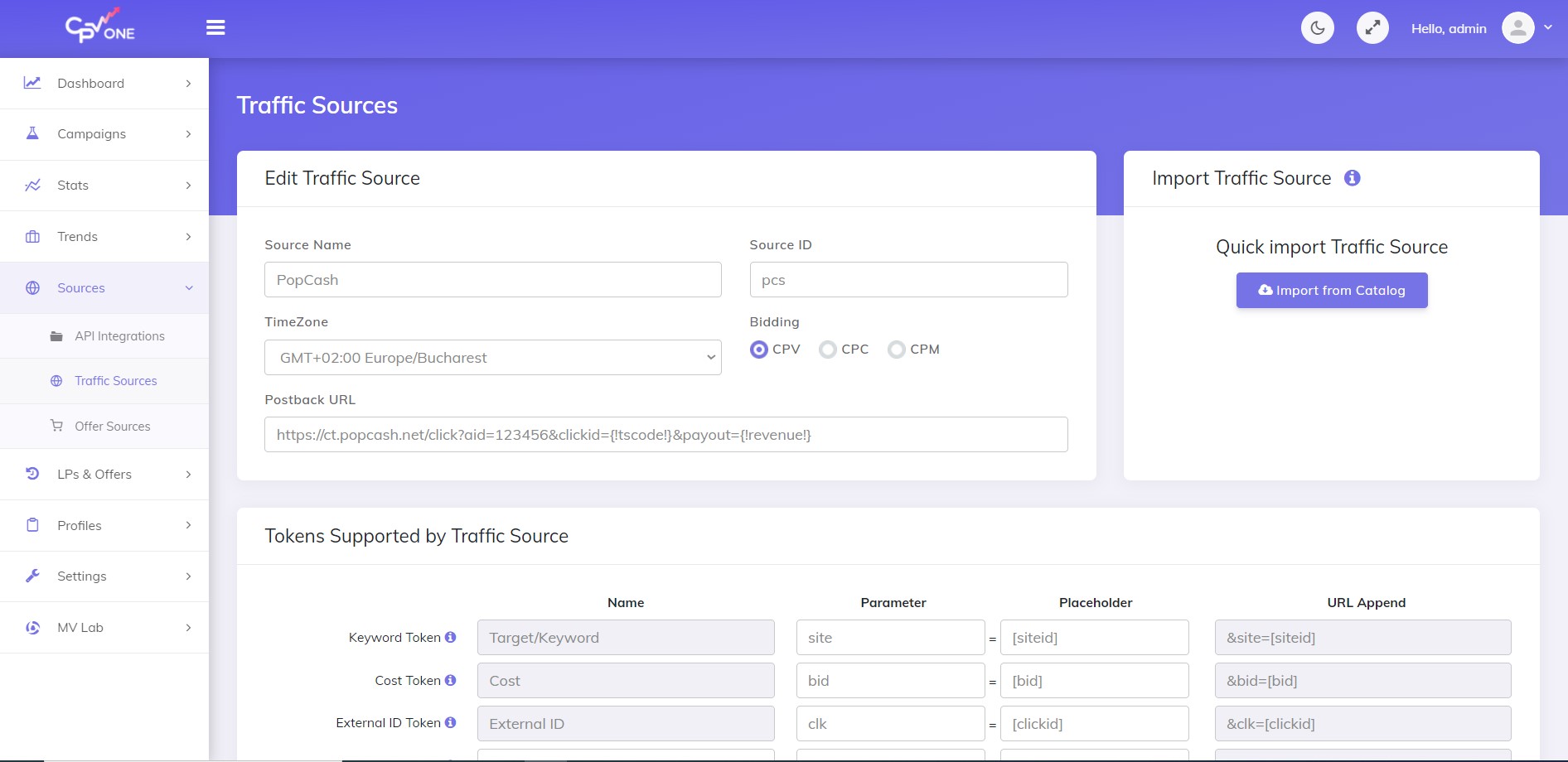
Go to Zeydo0 and ask for the link for the new traffic source.

- Create a new offer with the latest link in CPV One without changing the postback.
- Create a new campaign in CPV One with the new offer, and continue promoting your offers without stopping them.
Key Performance Indicators to Monitor
To effectively evaluate the performance of your affiliate links, consider monitoring the following key performance indicators (KPIs):
Click-through rate (CTR):
Measure the percentage of users who click on your affiliate links compared to the total number of link impressions. A higher CTR indicates more effective link promotion.
Conversion rate:
Track the percentage of users who complete a desired action. This can be purchasing after clicking on your affiliate links. Monitor the conversion rate to assess the overall effectiveness of your affiliate marketing efforts.
Revenue generated:
Evaluate the revenue generated from your affiliate marketing campaigns, allowing you to understand the financial impact of your efforts.
Return on investment (ROI):
Calculate the return on investment. Compare the revenue generated from your affiliate marketing efforts to the cost of promoting your affiliate links. This metric helps optimize your marketing campaigns for maximum ROI.
Link performance dashboard:
Utilize CPV One’s comprehensive link performance dashboard to monitor key metrics, such as clicks, conversions, revenue, and ID zones. The dashboard provides an overview of your affiliate link performance and enables data-driven decision-making.
You can learn important information about your affiliate links by tracking these KPIs and using CPV One’s reports. You will make informed decisions to optimize your affiliate marketing campaigns.
Addressing Potential Problems in Affiliate Link Tracking
Affiliate link tracking is an essential component of affiliate marketing. But it can come with its fair share of challenges. Let’s explore some of the potential problems you may encounter when tracking affiliate links and how to address them.
Addressing Challenges in Affiliate Link Tracking
Affiliate link tracking, a crucial aspect of affiliate marketing, has its challenges.
Fraud is a prevalent problem in affiliate marketing, potentially undermining your efforts. Here are strategies to combat fraud:
Implement Fraud Monitoring with Tracking Software: Employ advanced tracking software like CPV One, which is equipped with fraud monitoring capabilities. These affiliate marketing tools can identify fraudulent activities such as bots, false referrals, click fraud, or cookie stuffing. Read more about how to set it in this article.
Proactive fraud detection and prevention are crucial to maintaining the integrity of your affiliate marketing campaigns. It ensures accurate tracking of legitimate user interactions.
Conclusion
In conclusion, tracking affiliate links is essential for optimizing your affiliate marketing strategy. You can learn how affiliate link tracking works.
These tools can provide helpful information about the performance of your links. You can use this data to make better decisions. Ultimately, this can help you increase your return on investment.
Ensure accurate tracking by setting up your system correctly, avoiding mistakes, and utilizing CPV One’s advanced features.
Regularly assess the performance of your affiliate links using key indicators and the reporting tools from CPV One.
Address potential problems such as fraud and tracking challenges to maximize the effectiveness of your affiliate marketing efforts. You can enhance your affiliate marketing strategy with CPV One and drive better results.
If you have any problems, you can contact us or CPV One support. We will help you set everything up correctly.

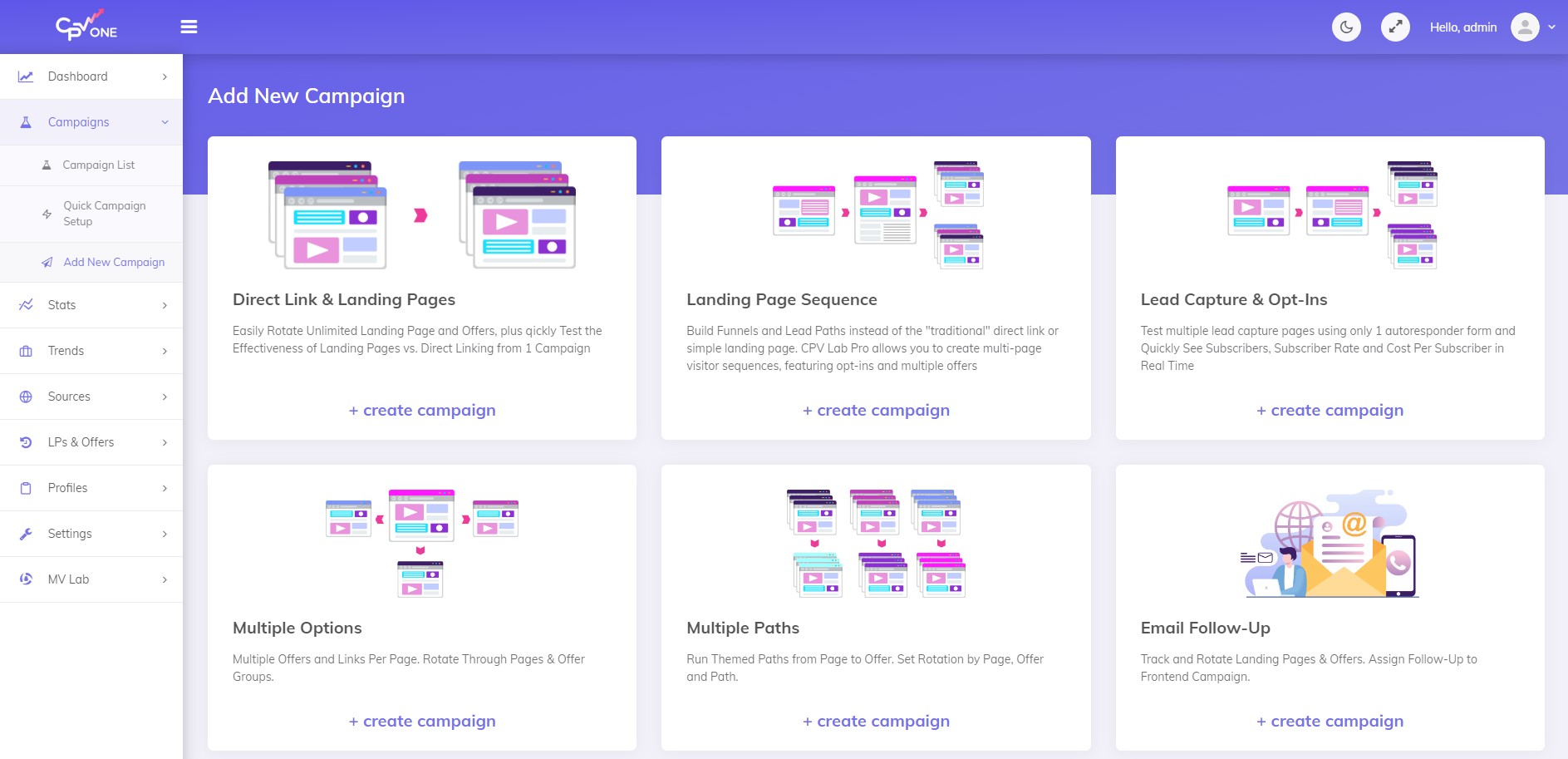
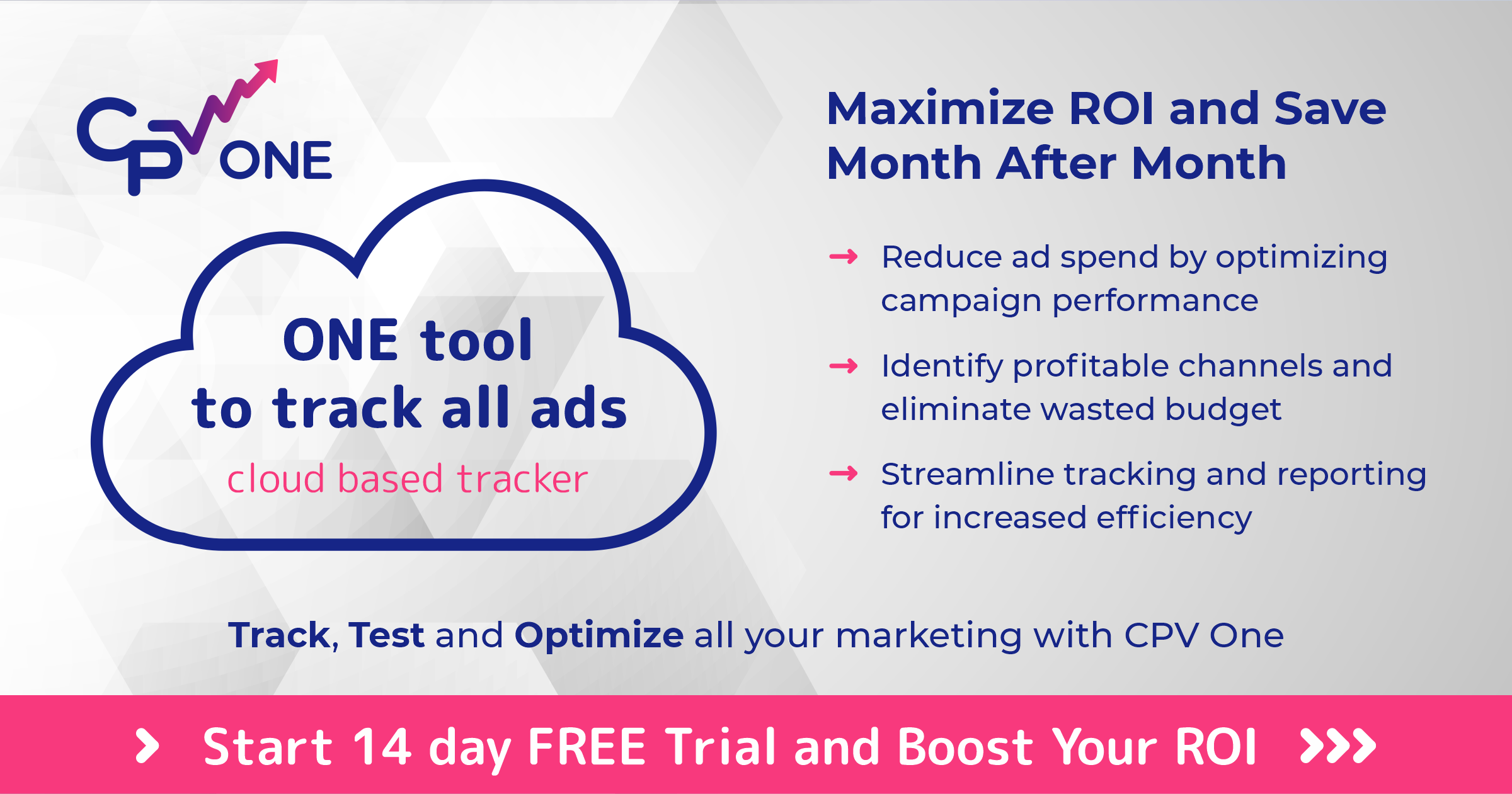
No responses yet